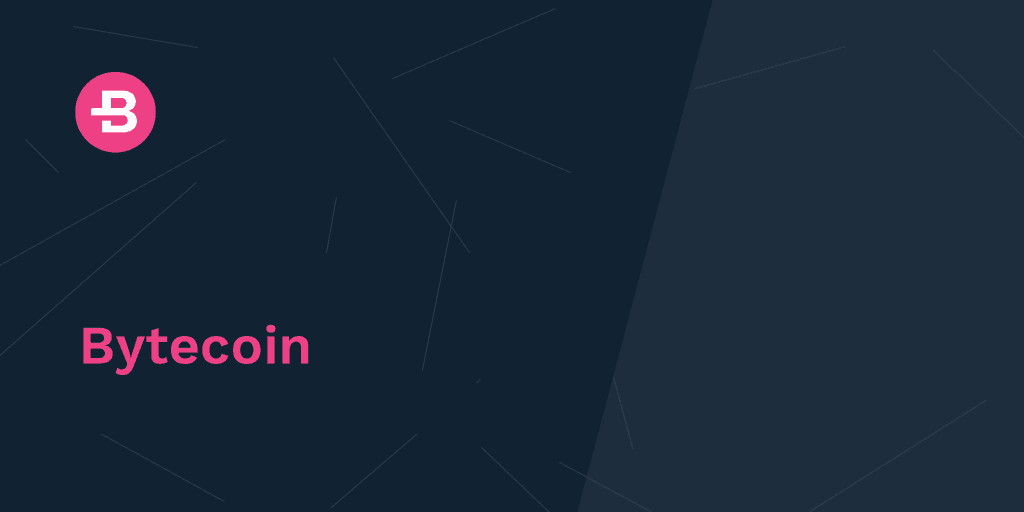Hi Jenny. Please introduce Bytecoin to our readers.
Well, as you’ve probably heard, Bytecoin is one of the oldest cryptocurrencies and the first untraceable coin to be created based on CryptoNote technology. From the beginning, we have been industry pioneers in terms of security, privacy, and anonymity. While we have kept true to the principles of our initial vision, now we are working on expanding further outside of the limited financial role that most coins play. Concerning what we are working on now and where we are headed in the future, one of our highest priorities is the development of innovative technology.
Tell us briefly about Bytecoin’s latest updates. What’s going on now with the project?
To start with, we’ve released a roadmap recently, so there’s plenty of things we’ve got going on, among them: Bytecoin Gateways, a project that is ideologically close to stablecoins, and the latest release of the stable version of our Amethyst software. These releases, along with early hardware wallet support, are preparing our users for the upcoming hard fork.
OK, so what is Bytecoin’s Gateway project all about?
The idea for the Gateway project came to us organically. We had been working on auditable wallets for some time and as a result of that work the possibility to do something akin to bridging presented itself, and we started exploring it.
We are still in the development stage of the project, but users who would like to use Bytecoin with more transparency and explore possibilities that are not limited to the frames of our blockchain will be able to do it with Bytecoin Gateway. Let’s take Ethereum as an example. With a prospective gateway, users would still get the benefits that come from using the original Bytecoin ecosystem, and, in addition, would be able to enjoy the benefits that come with Ethereum tokens. This would have the potential to increase adoption and, in doing so, benefit the community. Gateway technology offers a number of perks to anyone willing to make a bridge between the Bytecoin blockchain and another network.
How is Gateway connected with the new release of Amethyst?
Amethyst is a software update comprised of many different features, including the use of auditable wallets. As we noted earlier, auditable wallets make Gateways possible; they technologically provide transparency via public interface which is necessary for creating an auditable pool, which is the cornerstone of Gateway ideology.
Amethyst, why such an unusual name?
At first we wanted to name our releases after Icelandic mountains, they have quite beautiful names: Eyjafjallajökull, Herðubreið, Hrútfjallstindar. They would have really stood out, but umlauts and multiple consonants would have made these names highly inconvenient for our users.
Then one of our team members came up with the Amethyst idea. Amethyst is a type of stone that has a long history of significance. Etymologically, Amethyst has greek origins and means “not intoxicated”. The gemstone was thought by the Greeks to have special powers that enabled people to remain sober and clear-headed at all times. That and the elevated status traditionally enjoyed by the color purple have imbued the amethyst stone with a mystical significance the ramifications of which are still felt to this day.
For us, we thought it would be a fitting name for the next stage of our project which we consider a step forward in accordance with the direction in which we feel the industry needs to move. The time for wild speculation and platforms without substance has passed. The industry has grown up a bit and sobered up in the process. We have also undergone some changes but Amethyst is a reflection of the focus we’ve had since our founding on making Bytecoin as useful as possible for our community. We are interested in producing technology of value, the frills are not important. So Amethyst, for us it is a symbol that evokes this kind of no-nonsense approach.
What else do you plan to release before the hard fork?
Anticipating the hard fork, we have just released early support for Ledger and Trezor wallets on our stagenet. The technological grounds for this support is the ability to generate keys from mnemonics. To do this we had to adapt our existing wallet structure to the standard structure for HD wallets. That’s why we are waiting for the hard fork to use this technology in the mainnet.
What are the mechanics of the upcoming Bytecoin hardfork?
For a hard fork to occur, more than 90% of blocks with a new soft usage should be submitted. When this number of blocks is reached, the predetermined period starts, which lets everyone who hasn’t yet updated the software to catch up. And then finally at a certain point the system is scheduled to stop accepting the old blocks, accepting only the new ones. At that point all the new features will be able to be used throughout the network.
That’s how decentralization works. Bytecoin’s code is stored on users’ machines. Users and integrators must first download all the data of the new releases, and then the hard fork sets them to motion.
Thank you for the interview, and good luck with the upcoming events!
Thank you.






